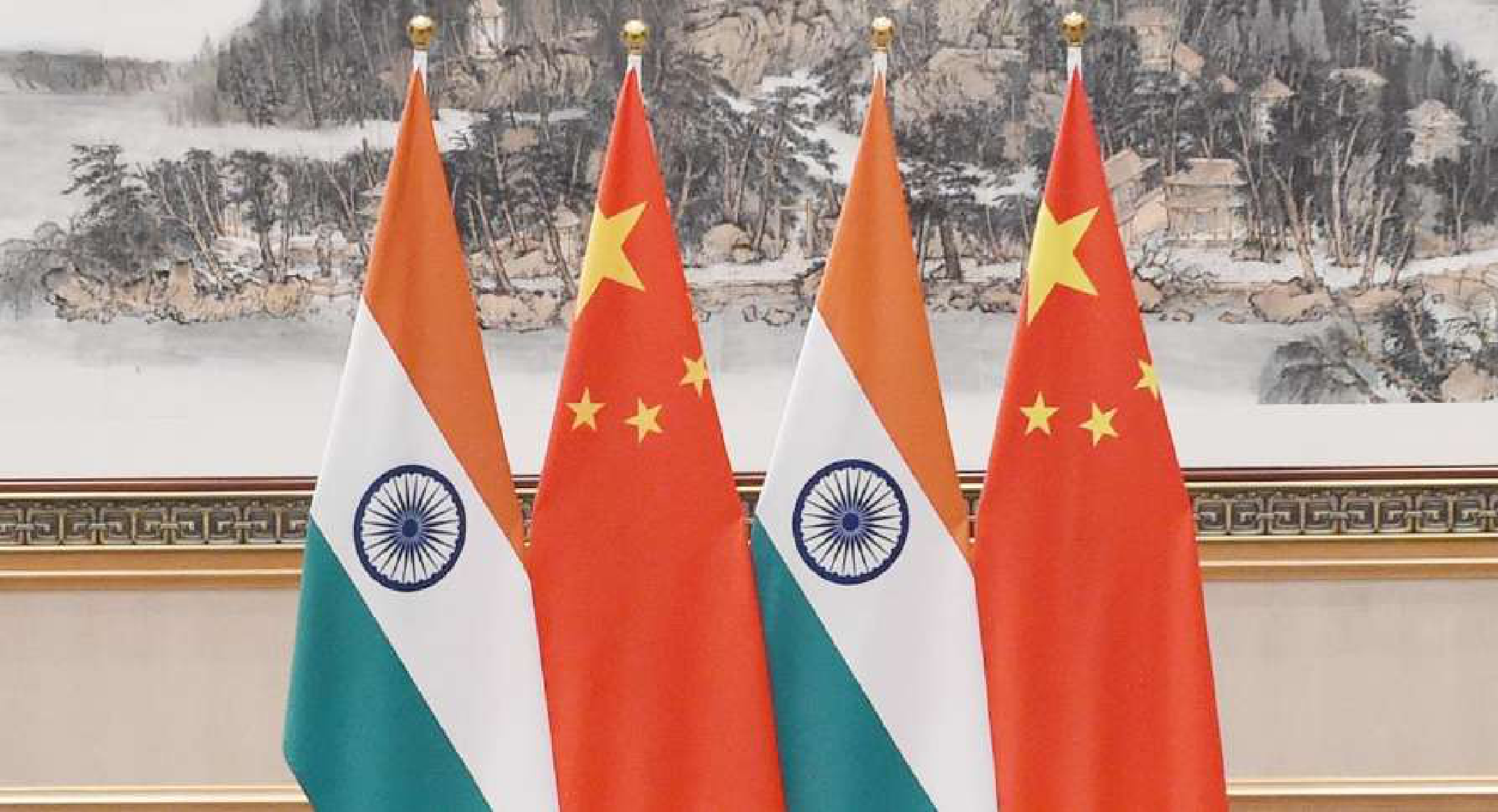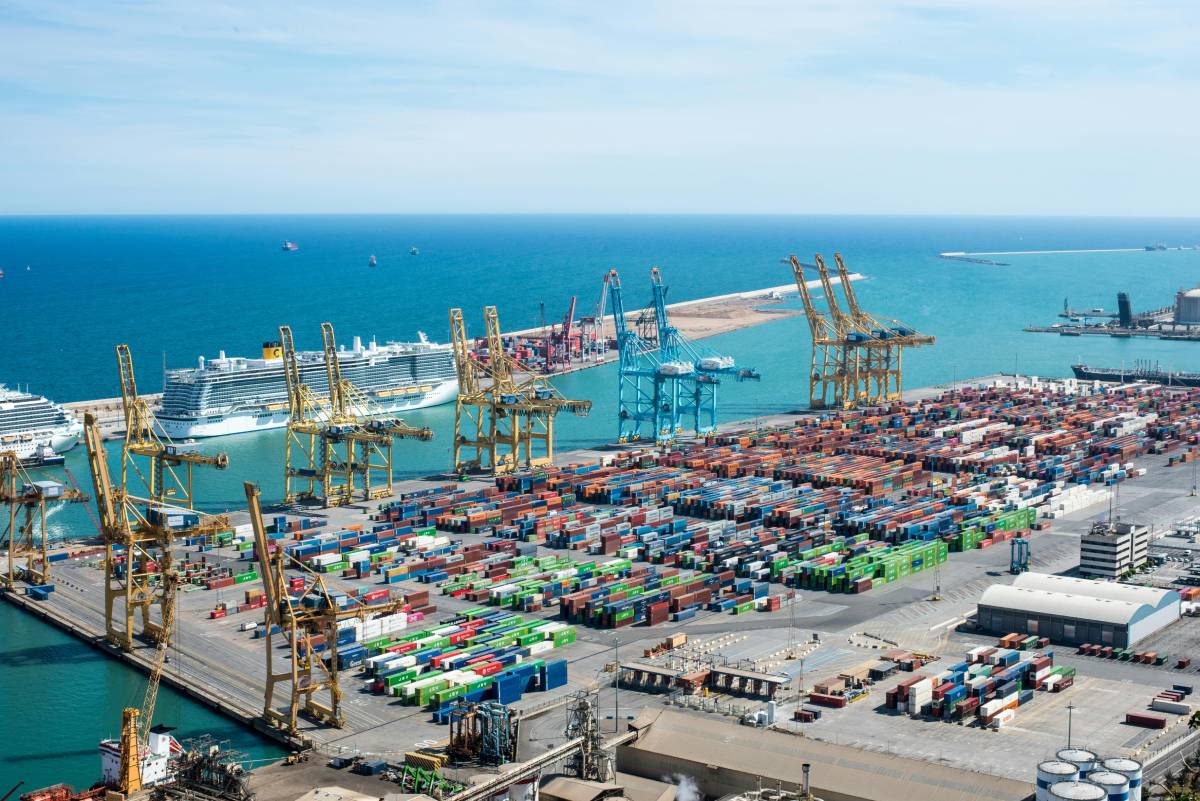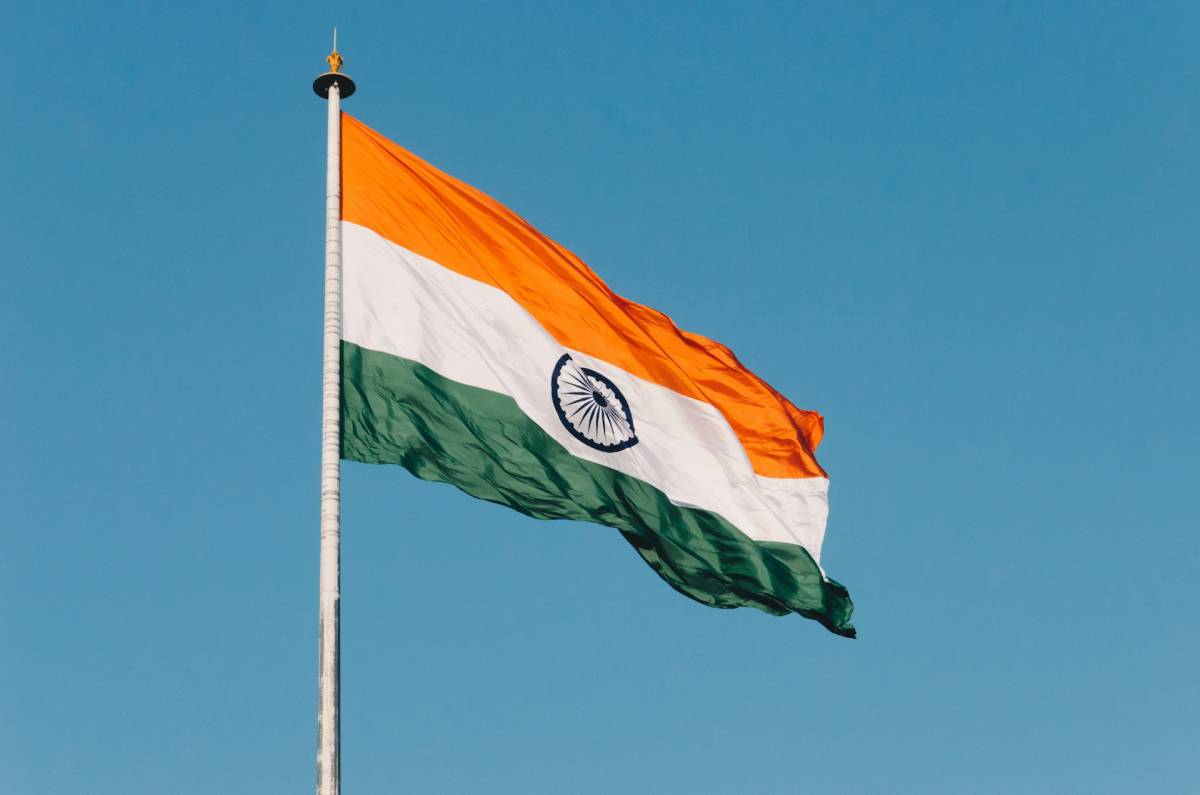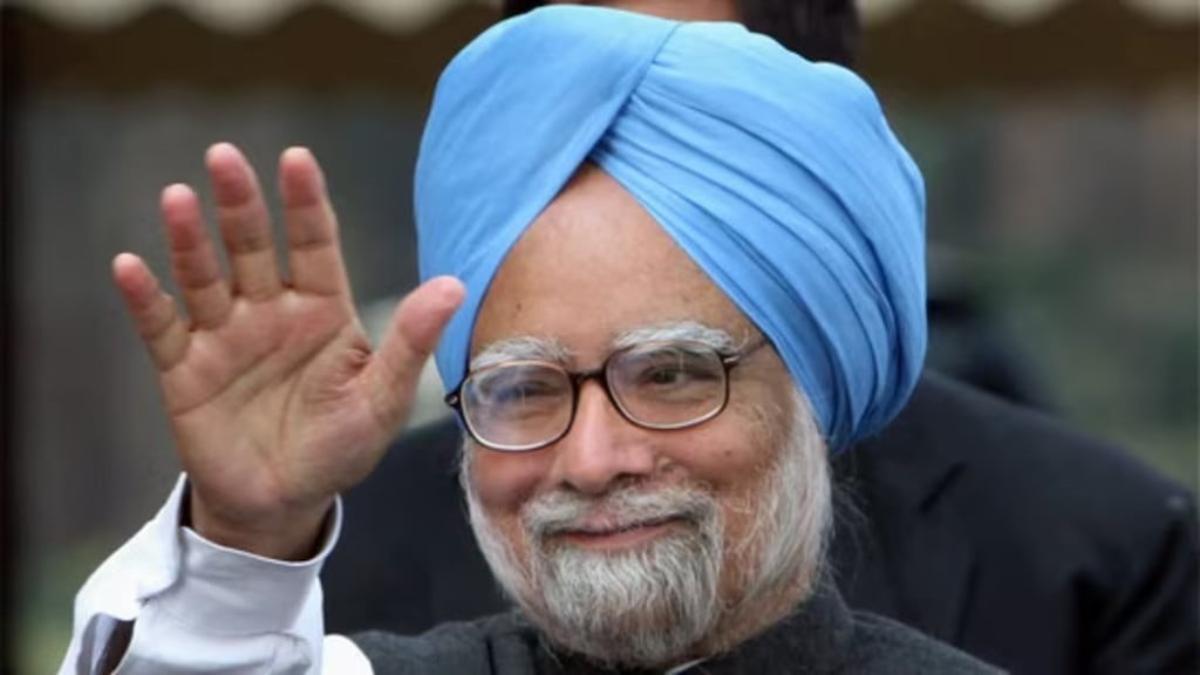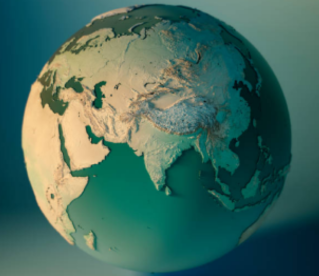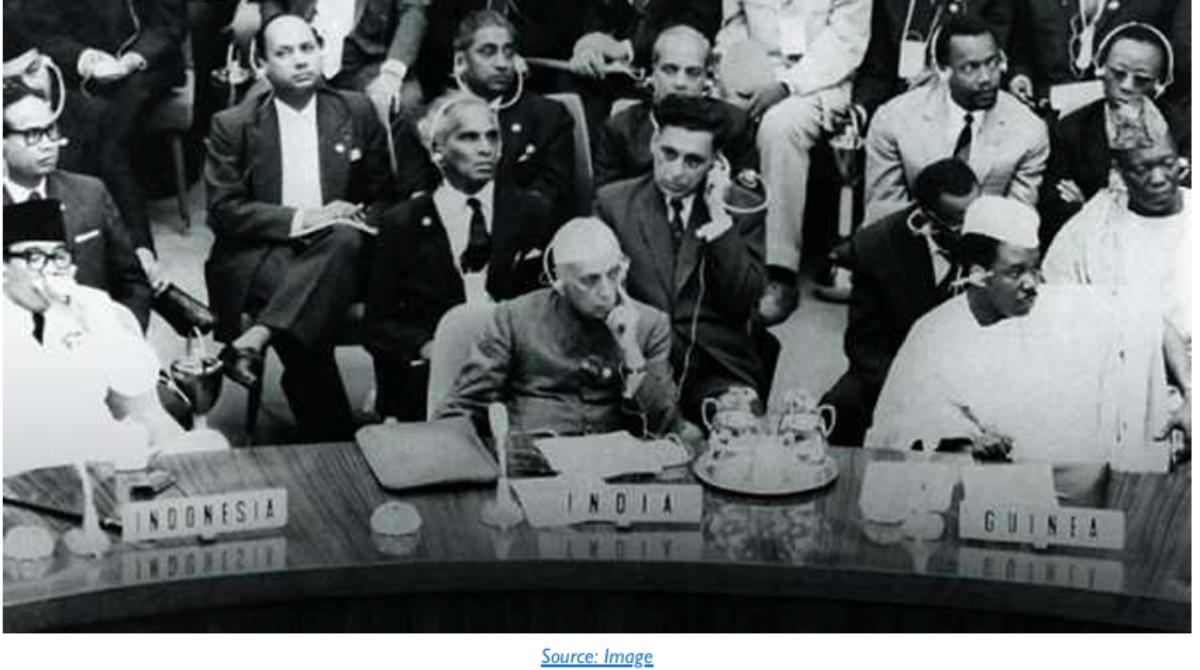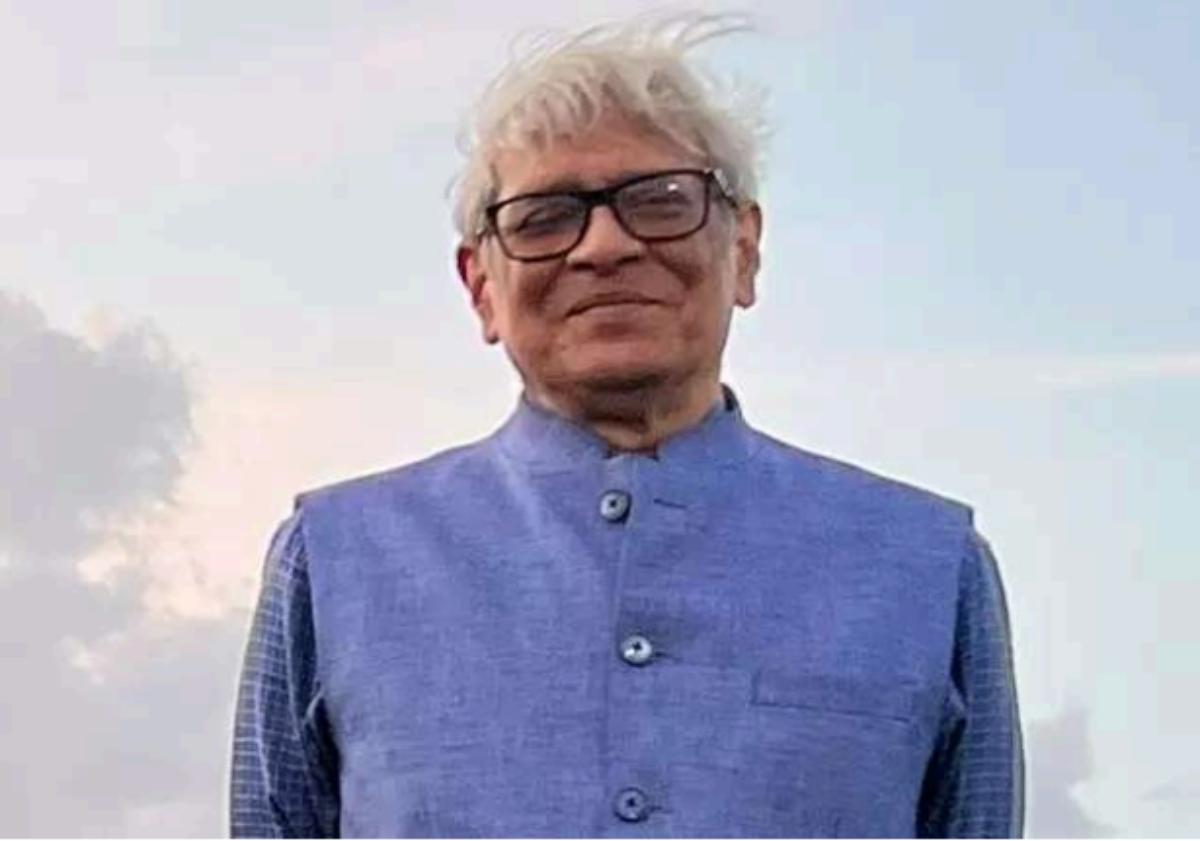Introduction
Since this paper takes a geostrategic perspective, it will be useful to unpack this term. James Rogers and Luis Simón in “Think Again: European Geostrategy” define it as follows
Geostrategy is about the exercise of power over particularly critical spaces on the Earth’s surface; about crafting a political presence over the international system. It is aimed at enhancing one’s security and prosperity; about making the international system more prosperous; about shaping rather than being shaped. A geostrategy is about securing access to certain trade routes, strategic bottlenecks, rivers, islands and seas. It requires an extensive military presence, normally coterminous with the opening of overseas military stations and the building of warships capable of deep oceanic power projection. It also requires a network of alliances with other great powers who share one’s aims or with smaller “lynchpin states” that are located in the regions one deems important.[1]
Krishnendra Meena, Prof at Jawaharlal Nehru University, replying as Expert @ Manohar Parriker Institute for Defence Studies and Analyses, distinguishes between geopolitics as
“the inclusion of domestic factors as influential in international politics” while geostrategy “describes where a state concentrates its efforts by projecting military power and directing diplomatic activity. The underlying assumption is that states have limited resources and are unable, even if they are willing, to conduct an all-out foreign policy. Instead they must focus politically and militarily on specific areas of the world. Geostrategy describes the foreign-policy thrust of a state and does not deal with motivations or decision-making processes. The geostrategy of a state, therefore, is not necessarily motivated by geographic or geopolitical factors. A state may project power to a location because of ideological reasons, interest groups, or simply the whim of its leader.”[2]
For constraints of space as well to retain focus, we shall limit ourselves to just two issues: security and trade; yet they cover a large canvas.
In this article, we trace the ups and downs in the India-China relations in the past five years, a period which saw a dramatic shift from the cozy “jhula diplomacy” days where China’s President Xi Jinping and India’s PM Modi posed for photographs, while sitting on a jhula (a traditional swing on which two people can sit), to a frosting of relations with India refusing to join the Regional Comprehensive Economic Partnership (RCEP) and not supporting the Belt and Road Initiative. This perhaps irritated China so much that it decided to revert to old habits and raise tensions by using the unsettled border dispute to stage skirmishes, two of which are described below:
Doklam Standoff

We begin with the June 2017 Doklam standoff. On 16 June 2017 Chinese troops with construction vehicles and road-building equipment began extending an existing road southward in Doklam, a territory that is claimed by both China and Bhutan. Since India was duty bound to protect Bhutan against any external aggression as per its 2007 treaty (more of it later), on 18 June 2017, as part of “Operation Juniper”, about 270 armed Indian troops with two bulldozers crossed the Sikkim border into Doklam, to stop the Chinese troops from constructing the road[3]. This resulted in hand to hand skirmish injuring troops of both sides. The standoff continued for over two months, when on 28 August, both India and China announced that they had withdrawn all their troops from the face-off site in Doklam.
The question is why did the Chinese do what they did; why did they lay claim to Doklam as their territory? As is widely known the Doklam area is dangerously close to the narrow Siliguri Corridor or the Chicken’s Neck that connects the north-eastern states with the rest of India. Undisputed control over Doklam will give China tactical and strategic advantage in the region.[4]
But the Doklam saga did not begin in 2017. Veteran journalist and strategic affairs specialist, Jyoti Malhotra, provides some detail. According to her, satellite imagery from Western and Indian sources revealed that the Chinese had built and populated a village – which they call Pangda – a couple of kilometres inside Bhutanese territory in the Doklam plateau area. The Chinese had offered Bhutan a deal on settling the un-demarcated boundary between them as long back as the 1990s, but Bhutan did not accept the offer in deference to Indian sensitivities.
This ‘package deal’ from 90’s was a swap for the Doklam area for bigger concessions in north central Bhutan. The Chinese renewed the offer just before the Doklam standoff in 2017 and, in fact, made it better. Malhotra says that it appeared Beijing was willing to accept a narrower sliver of the Doklam plateau, but there was a catch in the proposal – it would have to include the tri-junction area the Chinese call Gyemochen, close to the Indian border and overlooking the narrow ‘chicken’s neck’ area connecting the northeast to the rest of India. Again, in consideration of Indian security interests, Bhutan indicated it wasn’t interested. It has now come to light, as per an Asian diplomat, that during the 72-day standoff between Chinese and Indian troops on the Doklam plateau, the Chinese were building alternative routes to the ridge overlooking Indian territory.[5]
Malhotra continues: “For the moment, the Bhutanese say they aren’t overly concerned, but they know that by building and populating a village, the Chinese are sending them a message: If you don’t detach yourself from Indian concerns and settle the border in your own national interest, then incursions will keep happening.”[6]
Similar is the assessment of international relations expert, Manoj Joshi:
“[T]he Chinese reiteration of its claim to a large chunk of eastern Bhutan could well be a message to India. Though China has claimed areas of northern and western Bhutan since the 1950s, the eastern claim has never been pitched directly till now. The reason is that this claim is linked to Beijing’s demand that India return the Tawang monastery and its surrounding area to China as part of any overall settlement.”[7]
According to Lt Gen H S Panag (Retd) who served in the Indian Army for 40 years and was GOC-in-C Northern Command and Central Command says ”Doklam is a classic case. We proclaimed it as a victory. But, today the PLA is all over the Doklam Plateau with the exception of the Jampheri Ridge. So much for the Wuhan spirit.”
There’s another angle to Doklam saga. Malhotra says that as for Bhutan, India cannot expect Thimphu will be forever tied to its apron-strings, whether on the matter of security or economic interests, such as the sale of hydropower. Bhutan’s very respectful elite has begun to ask uncomfortable questions to their Indian interlocutors, as to why Bhutan cannot benefit, for example, from China’s Belt and Road Initiative (BRI). She further says that perhaps the only thing that will rescue India’s special engagement with these Himalayan nations is sustained political engagement by the highest levels in New Delhi. The Chinese see a power vacuum in India’s neighbourhood and have changed the rules in their exercise of power. India needs to change the rules back again.[8]
Galwan Valley
With progression of time, China’s appetite for devouring “disputed” but strategic land mass has only increased. And with greater ferocity. The clashes in Galwan valley in June 2020 claimed the lives of 20 Indian soldiers (including a Colonel) and an unspecified number of Chinese soldiers. The face-off between Indian Army and the PLA were at three points – Pangong Tso, Hot Springs and Galwan river. According Gen Panag
China seized approximately 40-60 square km of Indian territory in (these) three different areas, and in Galwan sector, the PLA has secured the heights north and south of the Galwan river (and) [W]hat matters in mountains/ high-altitude is the control of the heights. The valleys become untenable when surrounding heights are with the enemy.[9]
Gen Panag assesses that it is likely that the PLA has secured the heights with two battalions with one held as reserve at the LAC, whereas we are severely under-manned. And, having seized the initiative by securing approximately 40-60 square km of Indian territory in three different areas, China will be negotiating from a position of strength and will try to impose unacceptable conditions – no further development of border infrastructure on the Indian side – to restore status quo on its own terms. If diplomacy fails, China has come prepared for a border skirmish or a limited war.
While this was alarming enough, Panag laments that rather than evolving a clear strategy and broadly sharing it with the nation, the Narendra Modi government and the military have gone into ‘denial’ about any loss of territory, attributing the present situation to differing perceptions about the LAC. When the PM says “koi aaya nahin…” Gen Panag feels it suits China and “this may open Pandora’s box which in future may result in loss of more territory, possibly at Chumar, Demchok, Fukche, Kailash Range, Hot Springs, along the Shyok River and in Depsang Plains. Who knows China may apply the same logic at Tawang in the near future?”
In a follow-up article written a few days later, Gen Panag revealed “[I]n three areas – Galwan River, Hot Springs and Pangong Tso – China has deployed regular troops across the LAC and physically prevented us from patrolling up to the LAC.”[10]
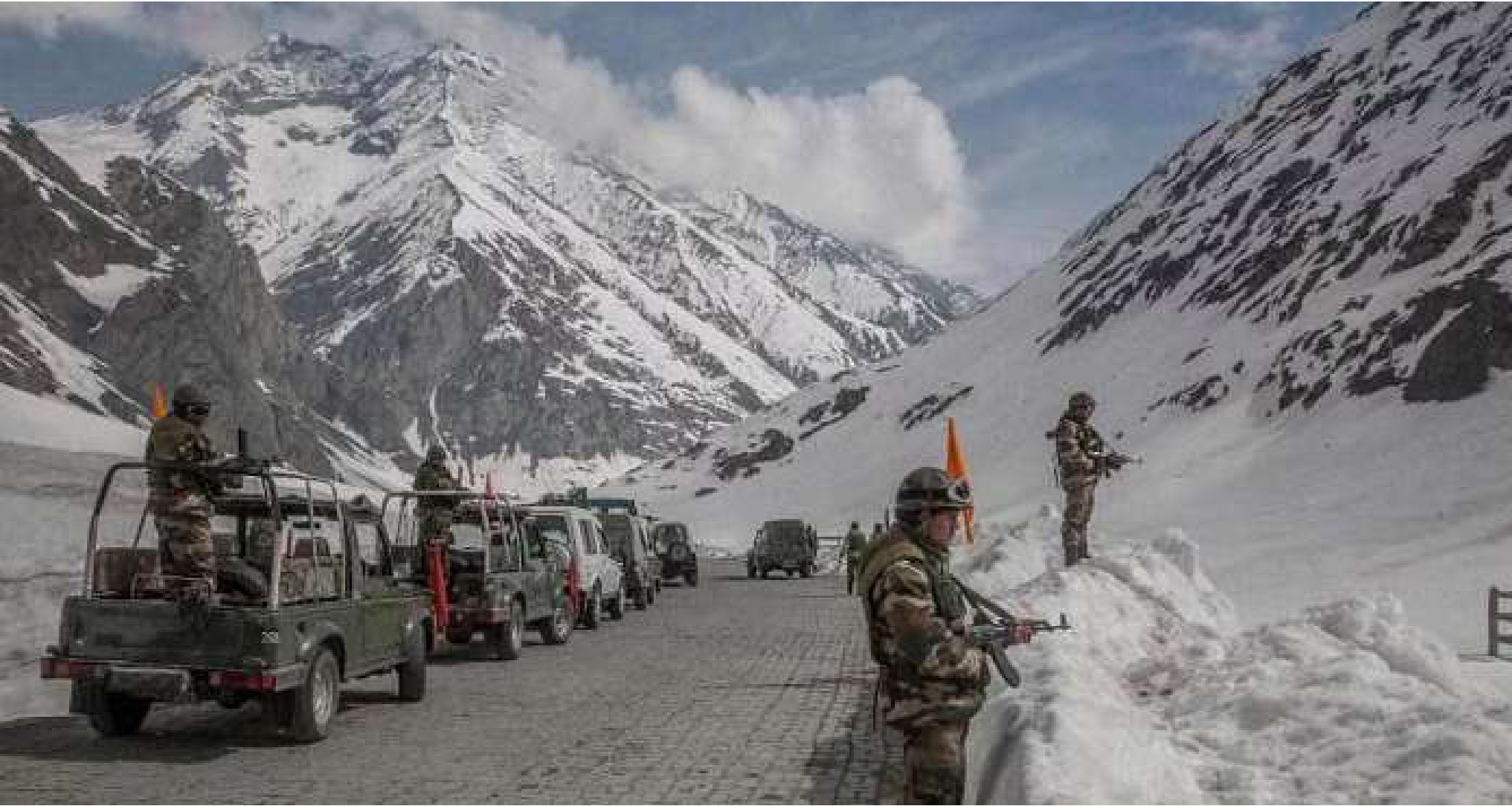
He also said that in the recurring crisis on the LAC in Ladakh, it is pertinent to analyse China’s political and military aims. China’s political aim is to exploit the unsettled border – undemarcated LAC – by triggering border incidents to prevent India from developing its border infrastructure that threatens Aksai Chin and other vulnerable areas. And in doing so, exert its hegemony over India and prevent it from becoming a political, military and economic competitor in the international arena, particularly with respect to the China-Pakistan Economic Corridor (CPEC), South China Sea and Indo Pacific.
So, while Lt Gen Panag as well Dr. Subramaniam Swamy, former BJP’s Rajya Sabha member, hold that China is still occupying 40-60 square km of Indian territory, Foreign Minister S. Jaishankar in an exclusive interview to PTI said the remaining issues mainly pertained to “patrolling rights and patrolling abilities”.[11] When there are such contrasting opinions, the general public is at a loss to figure out where exactly the truth lies; what exactly is the position. Note therefore Gen Panag’s lament:
In the current crisis, the government and the military have lost credibility and the battle of perception, and have literally endorsed China’s stand. It has also sent wrong signals to the international community. In the era of open-source intelligence and “soldier journalists” armed with mobile phones, denial and obfuscation do not help. Modi government should take the Parliament and the nation into confidence within the limits of security.
China’s military aim is to trigger border incidents and pre-emptively seize tactically important areas to cut off India’s strategic communications which threaten Aksai Chin and its other vulnerable areas. Depending on India’s reaction, China is likely to undertake short-duration limited operations to capture Sub Sector North, the area up to north bank of Pangong Tso, Demochok and Chumar. These areas extend the LAC from Karakoram, along Shyok River, north bank of Pangong Tso, along Kailash Range to Demchok and Chumar. These gains would also threaten the Nubra Valley and Siachen glacier and ensure China’s collusion with Pakistan to prevent any threat to the CPEC at Gilgit.
In this context, we may refer to what Shivshankar Menon, former National Security Advisor and former Ambassador to China, has said about the India-China stand-off in 2020. According to him, the stand-off has put the relationship between the two countries in “crisis”, and said that going back to old agreements would not bring back the trust and one has to wonder if the countries can achieve “a new equilibrium” after this.[12]
Chinese Aid in Pakistan’s Defence Build-up
While the border crisis in East Ladakh initiated by China completes four years with no sign of China de-escalating, disconcerting reports of significant naval developments in China and Pakistan have also emerged.
On April 26, the first of the eight Hangor class submarines contracted by the Pakistan Navy (PN) was launched in Wuhan, China. The launching ceremony is a formal custom celebrating a ship being transferred to the water for the first time. The deal for these submarines was inked during the visit of President Xi Jinping to Pakistan in 2015. Four of the eight are being built in China, while the rest are being built in Karachi, Pakistan.
Writing for the Financial Times, Group Captain (Retd) Praveer Purohit informs us that the project was delayed due to the refusal of Germany to supply the MTV 396 diesel engines for these submarines. He further tells us that these submarines are the export variant of the Chinese Navy Type 039 Yuan class boats. The Hangor class submarines, 76 metres long and displacing 2800 tons, are bigger than the latest Kalvari class (Scorpene) submarines that the Indian Navy has in its fleet.
Although details of the weapon systems on board the Hangor class are not available, it is speculated that they could be equipped with the 450 km range Babur-3 Submarine Launched Cruise Missile (SLCM). The submarines are equipped with an Air Independent Propulsion (AIP) system that gives them the ability to remain submerged for as long as 10 to 14 days. According to Purohit, this will significantly enhance the operational capability and ‘sea-denial’ ability of the Pakistan Navy (PN). Realising the importance of AIP, the PN retrofitted an AIP onto its three Agosta 90B submarines between 2008 and 2011. Of the four boats being constructed in Pakistan, the keel laying ceremony of the second boat (and sixth overall) was held in Karachi on 14 February. Thus, despite some delays, the Hangor project seems to be picking pace.
He further adds that the grim reality is that today, the Indian Navy has only 16 conventional submarines, with 11 of these being inducted between 1986 and 2000. None of the submarines in the Indian Navy have AIP. Although the DRDO is reportedly working on developing AIP, former naval chief Admiral Arun Prakash is quoted as saying, “It would take another seven to ten years before India has AIP submarines”. Purohit laments that the project to construct AIP submarines has been plagued by unpardonable indecision and inexplicable delays, reflecting poorly on our higher defence management.[13]
Purohit goes on to add that more recently, China sailed its third (and biggest) aircraft carrier ‘Fujian’ for sea trials on May 01. This ship was launched in 2022 and displaces about 80000 tons. Equipped with the state-of-the-art Electromagnetic Aircraft Launch System (EMALS), the Chinese Navy (PLA-N) is only the second navy after the U.S. Navy to possess this capability. The Fujian is expected to enter service by the end of 2025/ early 2026, bolstering the PLAN’s capability for extended power projection.
Meanwhile, an editorial in Global Times refers to a report released by the long-established conservative think tank in the US, the Center for Strategic and International Studies (CSIS), which states that
China’s scientific research vessels engaged in energy and marine environmental surveys in the Indian Ocean can support “military needs,” including how to manoeuver and obscure submarines during conflict. The timing of this report is delicate, coinciding with the visit of Maldivian President Mohamed Muizzu to China, while another South Asian country, Sri Lanka, recently announced the suspension of foreign research vessels including those from China entering its waters under India’s pressure. The CSIS report rightly comes at a time when some countries need to manufacture a “China threat” narrative in the Indian Ocean region and provides them with ammunition.[14]
The recent naval developments in the Pakistan Navy and the PLA-Navy should not be looked at in isolation from each other. Given the strong ties and collaboration between China and Pakistan, the PLA Navy and the Pakistan Navy combine has the potential to pose serious impediments to the Indian Navy.
But it is not just the Pakistani Navy that China is strengthening which has obvious implications for India. China is also modernising the air force of Pakistan. According to reports, China has enabled Pakistan to gain “strategic depth” by equipping Pakistan Air Force with the multi-role fighter plane J-10 which is far more advanced than its earlier version JF-17s that Pakistan already has. Pakistan deployed J-10 to escort JF-17C and Wing Loong II drones for a series of air and artillery strikes inside Iran in January 2024.[15]
As any defence expert will point out, the sale of strategic military equipment like fighter planes, submarines, missiles and heavy artillery like howitzers and other sophisticated weaponry generally leads to deeper defence and economic ties of strategic significance. It is in this context that one may also like to understand Bangladesh’s plans to acquire the J-10 as it was not keen on French Rafales, as neighboring India was already operating them.[16]
The “Triangle of Death”
By now it would be clear that the geostrategic implications in India-China relations are not restricted to the two countries’ borders. With the Chinese PLA Navy outstripping the US Navy at least in size, China needs multiple playgrounds to display its awesome naval power. If the playgrounds happen to be in other countries, the additional objective of building allies (as well make them dependent) becomes on course. Chittagong in Bangladesh, Gwadar in Pakistan, Hambantota in Sri Lanka, Kyaupkyu in Myanmar, Malacca in Malaysia, and Mombasa in Kenya. The Indian Ocean region is a key recipient of China’s investment in foreign commercial ports.
A report in EurAsian Times tells us that Chinese entities have acquired a total of 101 port projects. There are dual-use (commercial and military) ports owned, constructed, or operated by Chinese firms. Further, China operates or owns at least one port in every continent except Antarctica. Of the 101 projects, 92 are active, whereas the remaining nine port projects have become inactive due to cancellation or suspension by the end of September 2023.[17]
And what may be alarming for Indian defence strategists is that after Hambantota in Sri Lanka and Gwadar port in Pakistan in South Asia, China is building a submarine base in Bangladesh and another port in Myanmar. And the three Chinese-run ports in South Asia – Chittagong in Bangladesh, Hambantota in Sri Lanka, and Gwadar in Pakistan – are called a “triangle of death” [18] encircling India. Chinese submarines and warships will dock right under India’s nose very soon. Apart from supplying submarines to the Bangladesh Navy, China is constructing a port in Cox Bazar, which was inaugurated in 2023.
China has long sought access to the Bay of Bengal and the Arabian Sea because of its limited and unfavorable maritime geography, particularly along the Western Pacific. China’s entry into the Bay of Bengal was facilitated earlier by Myanmar and now by Bangladesh.
China has termed its endeavors in the Indian Ocean benign, a claim India has not accepted. The capabilities that the Chinese Navy is pursuing in the region would help it to undertake a military mission in the region.
China’s Perspective
So far the lens we have used is India’s relations with China. The perspective changes if we were to flip the title to China’s relations with India. According to Shivshankar Menon, former National Security Advisor and former Ambassador to China, “China’s relationship with India lies in India’s external environment”, suggesting that China’s response is based on what its perception of India’s relationship with the West, particularly US.[19]
Menon was speaking at a panel discussion titled ‘India and China: Uneasy Neighbours’ along with Lt General SL Narasimhan, Director General, Centre for Contemporary China Studies, and Member, National Security Advisory Board, Government of India; and Yun Sun, Senior Fellow and Director of China Program, Stimson Centre, which was moderated by Gideon Rachman, Chief Foreign Affairs Commentator, Financial Times.
They discussed the fraught relations between the two countries marked by an unresolved border dispute, how New Delhi was restricting Chinese investment and reducing economic dependence, Beijing’s growing political influence among India’s neighbours in the sub-continent, and how India is drawing closer to China’s strategic rivals, including the US.
Both Narasimhan and Menon pointed out that the India-US relation has not been the only issue between India and China, and that tensions have been building up since 2012-13. According to Menon, there was a risk of overestimating the US factor in India-China relations. His belief was that India-China relations are sui generis and self-driven. It is not a function of who’s in Washington or how Washington’s relations are with Beijing at any given moment of time, even though that’s the way most people tend to look at it, but India-China relations have their own timing, momentum and drivers.
The geo-political formations that India joined, namely the QUAD comprising the US, Japan and Australia and the I2U2, – India, Israel, UAE and the US, also indicated that India was trying to counter the Chinese geostrategy vis-à-vis India and drew adverse responses from China.
Trade Imbalance – India’s Achilles Heel
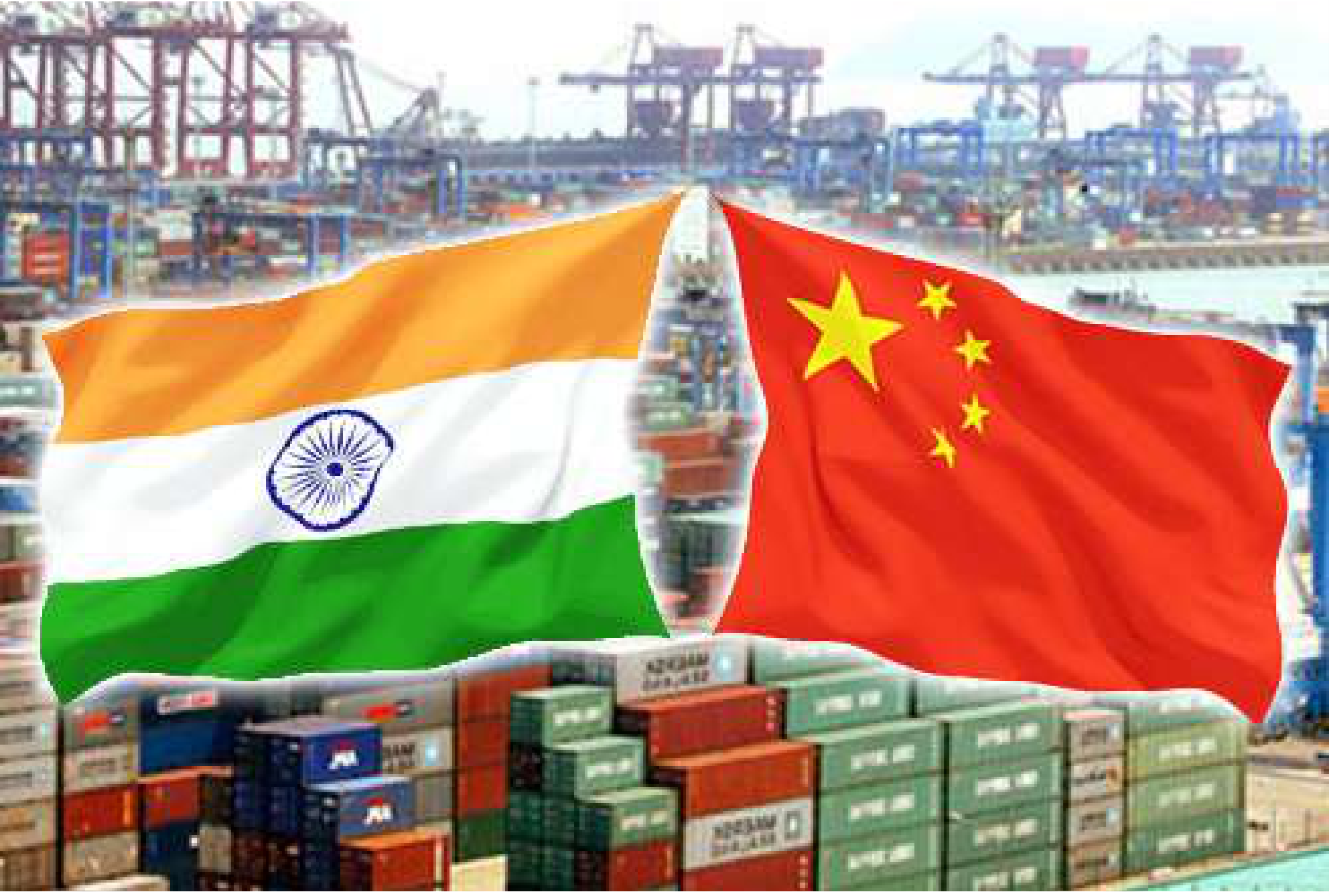
“It’s the economy, stupid”. Although this phrase is attributed to Bill Clinton during his presidential campaign against George Bush, it was actually coined by James Carville, a strategist in his team. That phrase is perhaps more appropriate to understand what defines India-China relationship.
External Affairs Minister, S. Jaishankar acknowledged the increased focus on the connection between the economic requirements of the country and foreign policy, but with riders:
“When we look at our partners, we think how that relationship can help drive economic growth. (However) I cannot, in the name of an open economy, open up my national security to work with a country which is laying claim to my territory. Both our economic and national security are at stake… I can tell you how strong that sense of resentment is today about the dumping of goods from China. We will do what it takes. [20]
But ground realities are no respecters of grand statements. As per data released by the think tank Global Trade Research Initiative (GTRI), with imports from China crossing over $100 billion in FY24, China has overtaken the US to become India’s largest trading partner after a gap of two years.[21] This is in spite of India trade relations with China have been under scrutiny largely due to India’s dependence on the neighbouring country’s critical products such as telecom and smartphone parts, pharma, advanced technology components among others.
In the context of our paper focussing on geostrategic aspects of India’s relations with China, there are three aspects in the Report that merits our attention. First, India imported $4.2 billion worth of telecom and smartphone parts, accounting for 44 per cent of total imports in this category, indicating significant reliance on Chinese components. Laptops and PCs imports from China totalled $3.8 billion, making up 77.7 per cent of India’s imports in this sector, showcasing a heavy dependence on Chinese technology (emphasis added). Second, India’s exports to China have remained near stagnant between FY19 and FY24 while imports have surged by nearly 45 per cent which has resulted in widening of the trade deficit from $54 billion in FY2019 to $85 billion in FY2024. Third, for India, China is still the number one supplier of heavy machinery.
That brings to mind Kanti Bajpai’s take on this matter. In a 45-minute interview to Karan Thapar for The Wire, ( https://youtu.be/V-Um-tpYczo) to mark the launch of his book ‘India Versus China: Why They Are Not Friends’, Kanti Bajpai laid out four reasons why in his opinion the two countries are unfriendly to each other:
- The first is their perceptions of each other.
- The second is their territorial claims and perimeters.
- The third is their strategic partnerships, where they tend to be on different, if not opposed, sides.
- The fourth is the asymmetry of power between them, which is steadily increasing.
In other words,
“India, China can’t be friends till India catches up, for which It needs near-civilisational change”.
[1] http://europeangeostrategy.ideasoneurope.eu/2010/03/14/think-again-european-geostrategy/
[2] https://www.idsa.in/askanexpert/geopoliticsandgeostrategy
[3] Wikipedia, https://en.wikipedia.org/wiki/2017_China%E2%80%93India_border_standoff
[4] See for example, Prabhash K Datta, “Doklam faceoff: Why China wants to grab Bhutan’s land and blame India”, India Today, July 11, 2017 https://www.indiatoday.in/india/story/doklam-faceoff-why-china-wants-to-grab-bhutans-land-and-blame-india-1023310-2017-07-09
[5] Jyoti Malhotra, “China’s activities in Bhutan, Nepal should ring alarm bells in India. Does Delhi have a plan?”, The Print, 1 December, 2020 https://theprint.in/opinion/global-print/china-activities-in-bhutan-nepal-should-ring-alarm-bells-in-india/555060/
[6] Ibid
[7] Manoj Joshi, “In China’s Territorial Claims in Eastern Bhutan, a Message for India?”, The Wire, 10 July 2020 https://thewire.in/external-affairs/china-bhutan-india-territory
[8] Jyoti Malhotra, op. cit.
[9] Lt Gen H S Panag, “India’s Fingers have come under Chinese boots. Denial won’t help us”, The Print, 04 June, 2020 https://theprint.in/opinion/indias-fingers-have-come-under-chinese-boots-denial-wont-help-us/435145/
[10] __________, “PM Modi’s silence on LAC stand-off is benefiting China. India must change its script”, The Print, 11 June, 2020 https://theprint.in/opinion/pm-modis-silence-on-lac-stand-off-is-benefiting-china-india-must-change-its-script/439423/
[11] “Relations With China Not Normal Because…”: S Jaishankar On Border Row, India News, Press Trust of India, May 12, 2024 https://www.ndtv.com/india-news/relations-with-china-not-normal-because-s-jaishankar-on-ladakh-border-row-5647394
[12] See “‘China’s relationship with India lies in India’s external environment’”, Express News Service, June 8, 2021 https://indianexpress.com/article/india/chinas-relationship-with-india-lies-in-indias-external-environment-7348860/
[13] Praveer Purohit, “China-Pakistan Naval Developments Increase India’s Challenge”, Financial Express,
[14] “China’s scientific research ship ‘invades’ the Indian Ocean? Who will buy it?” Global Times editorial
Jan 11, 2024 https://www.globaltimes.cn/page/202401/1305251.shtml
[15] Ritu Sharma, “Israeli Fighter in Pakistan Air Force? Why J-10C, Operated by Pak & China, may be heavily Inspired IAI Lavi?”, The EurAsian Times, May 13, 2024 https://www.eurasiantimes.com/israeli-aircraft-in-pakistan-air-force-why/amp/
[16] In 2018, a Bangladesh Air Force delegation was in China to inspect the J-10.
[17] Ritu Sharma, “Right Next To China — India To Invest In Deep Water Port In Philippines After Iran, Sri Lanka, Myanmar & Oman”, The EurAsian Times, May 8, 2024 https://www.eurasiantimes.com/right-under-chinas-nose-india-to-invest/
[18] https://www.eurasiantimes.com/of-death-india-tries-to-woo-bangladesh-and-sri-lanka-to-its-corner/
[19] “‘China’s relationship with India lies in India’s external environment’”, Express News Service, June 8, 2021 https://indianexpress.com/article/india/chinas-relationship-with-india-lies-in-indias-external-environment-7348860/
[20] “’We will not let China dictate the play…’: Jaishankar on changes in foreign policy in Modi era”. Business Today, May 06, 2024 https://www.businesstoday.in/india/story/we-will-not-let-china-dictate-the-play-jaishankar-on-changes-in-foreign-policy-in-modi-era-428381-2024-05-06?onetap=true
[21] Ravi Dutta Mishra, “India’s top trade partner: China regains spot on higher imports”, Indian Express, May 13, 2024 https://indianexpress.com/article/business/indias-top-trade-partner-china-regains-spot-on-higher-imports-9324553/

